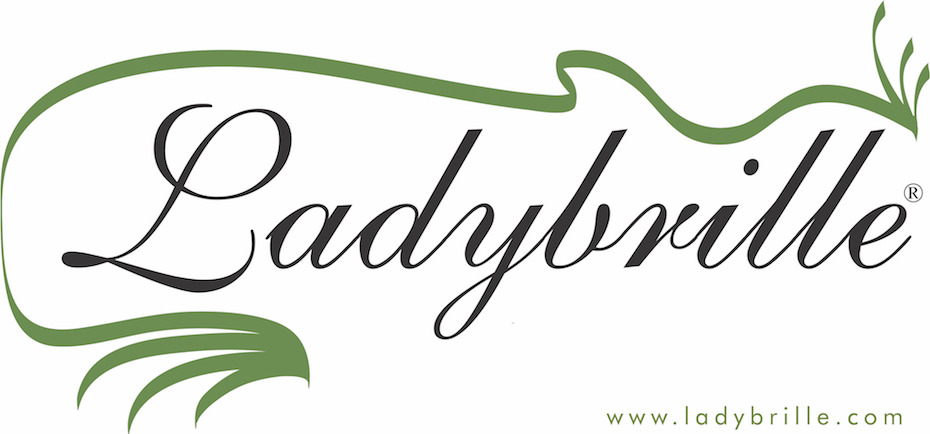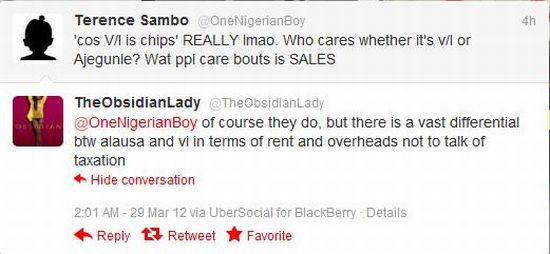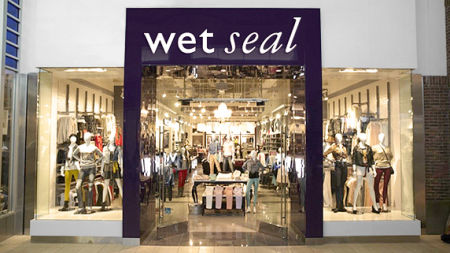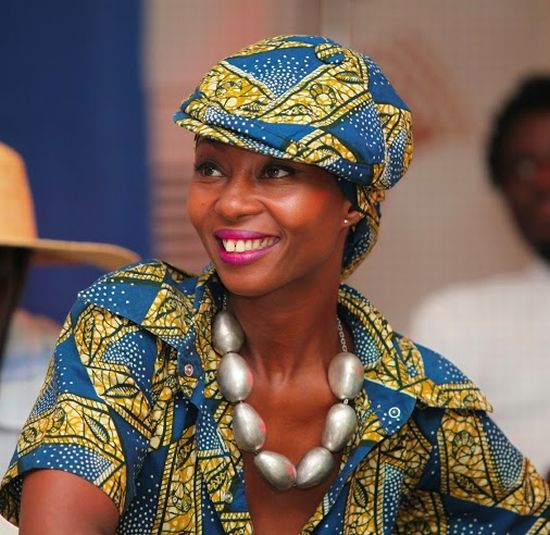 My discussions on Africa Fashion Law have been limited on Ladybrille, particularly because the cases are far and few between. Although a lot of breach of contract, trademark and copyright infringement occur, among other legal issues, many keep silent about it. Nevertheless, we do have an interesting Fashion Law topic raised today by Terrence Sambo of One Nigerian blog. Here in the USA, we saw the same question raised and currently in court as designer Kate Spade was recently sued for $1million over the alleged infringement of the Poppy print.
My discussions on Africa Fashion Law have been limited on Ladybrille, particularly because the cases are far and few between. Although a lot of breach of contract, trademark and copyright infringement occur, among other legal issues, many keep silent about it. Nevertheless, we do have an interesting Fashion Law topic raised today by Terrence Sambo of One Nigerian blog. Here in the USA, we saw the same question raised and currently in court as designer Kate Spade was recently sued for $1million over the alleged infringement of the Poppy print.
Here, Sambo questions the use by Folake Folarin Coker, Lawyer turned Designer, in her latest showing at New York Fashion Week under the Tiffany Amber label.
“African luxury brands have slowly been paving the way for other younger designer to follow and also bearing the torch for all that is African fashion and most times the best of it. It’s kind of uncool when these brands we all look up to sorta perform below expectation or take actions you least expect from them. The most striking thing about the Tiffany Amber SS13 collection that just showed at MBNYFW titled ‘Rythmn of Africa’ were the African dancing ladies print which bear very close resemblance to the one used by another Nigerian luxury brand Jewel by Lisa in it’s ss12 collection.
The Tiffany Amber design team could have worked harder to create a print that still flows with the collections theme without going to close to the Jewel by Lisa print. Copying aside, its not just not a good look. It’s not like Zara jacking off a Prada print…Tiffany Amber and Jewel by Lisa are both luxury brands.” – Terrence Sambo/One Nigerian Blog
Ladybrille coverage of the event is forthcoming. However, the alleged copyright infringement issue raised here ought is interesting.
What Law Governs?
Nigerian Copyright Law if a lawsuit ensues in Nigeria. US law could also govern if there can be a connection made to give US courts jurisdiction (power to hear this case). This is particularly so because Tiffany Amber unveiled the collection, for the first time, in New York. Will that fly, that is for brilliant lawyers to hash that issue out should Jewel by Lisa decide to sue, which I highly doubt it would come to that.
Does Nigerian Copyright Law Protect Fabric Prints?
Yes. Prints are defined under “Artistic Works” under the Act. USA law also protects print designs but does not protect the entire garment, its cut or its assembly.
If I want to Protect by Fabric Designs What is the Medium to Use?
Copyright Law.
What Can I Do With My Copyrights When Others Infringe Them?
You can go after those who infringe and knockoff your designs i.e. sue them and also send a message to others to back off.
Does Copyright Protect the Functional elements of my garment?
Both under US and Nigerian law, your “artistic” works are protected i.e. your fabric prints, your artistic designs that you place on your shoes, clothes, bags etc. For U.S law, the functional element of your garment i.e. pocket of your jacket or your entire jacket, for example, is not protected. Nigerian law is silent on this but a reading of the act would seem to suggest it is in line with US law on the non-protection of the functionality of a garment.
Conclusion
The one problem I have with this insinuation of alleged copyright infringement is Sambo offers nothing to establish that Jewel by Lisa in fact owns the fabric prints exclusively i.e. she does not own it under a non-exclusive license by whomever the graphic designer/artist is. Until he can establish that, if the artist decides to sell his/her designs to multiple designers under a non-exclusive license, insinuating infringement with no other backing against the Tiffany Amber label is “not a good look,” to borrow his words.
However, assuming Jewel by Lisa does in fact own its prints exclusively, do you believe there is infringement? Are the fabrics strikingly similar? You decide.
Photocredit: Tiffany Amber Photo by Keith Bedford/Reuters, Jewel by Lisa photo by JBL
Ms. Uduak Oduok is the Founder and Editor-in-Chief of Ladybrille® Magazine. She is also an Attorney and Partner at Ebitu Law Group, P.C, ebitulawgrp.com where her practice areas include Business Litigation and Fashion & Entertainment Law. She has counseled a range of clients from musicians, models, actors and actresses to designers on numerous areas of the law including contracts, business law, fashion and entertainment law, copyright, trademark i.e. intellectual property law. She can be reached at ([email protected]) to share/pitch your Africa Fashion Law™ related stories with her. All other inquiries, please visit the www.ladybrillemag.com/contact for appropriate contact email.
DISCLAIMER: Nothing herein forms an attorney-client relationship. The legal commentary provided is for informational purposes only and is not meant nor should be construed to be legal advice.
Ms. Uduak is best known as an advocate who uses the tools of media and the law to help creatives and businesses clearly articulate their true brand identities, and communicate it to the world through their products and services, to maximize profits. She is a lawyer, speaker, author, journalist, and recognized thought leader, and trailblazer for her work on Africa’s emerging global fashion and entertainment markets, and the niche practice of fashion law in the United States. She is also the founder and publisher of Ladybrille® Magazine, and an Attorney and Partner at Ebitu Law Group, P.C, where her practice focuses on Fashion, Business, & Entertainment Law and Trials. For more information about her, visit www.msuduak.com.










If by research you mean you asked Banke and she said no, fair enough, but I’ve seen a print that she did for jbl that looked like a scaled up version of a duro olowu print so it wouldn’t be the first time.
In agreement with Estella, the motif is so common that I’m not sure it merits all the excitement. Google African lady print and you will be inundated.
Maybe I’m wrong but since they both get their prints from Banke Kuku is it safe to say she is the reason behind the similarity. She designs for Duro Olowu too and I’ve noticed similarities there as well. Also, Tiffany Amber had a lot of success with a similar motif years before Lisa was a designer. I wasn’t that impressed with the TA collection as a whole so I suppose my real feelings are… Who cares!
Having done some research into this debacle, Im pretty certain Banke Kuku did not design the Tiffany Amber print – that would be too much of a conflict of interest!
See use of same/similar print in my 2005 collection. http://photos1.blogger.com/x/blogger2/6740/1040455293254638/1600/z/111795/gse_multipart55922.jpg
Uduak, you said it all in your conclusion:
“The one problem I have with this insinuation of alleged copyright infringement is Sambo offers nothing to establish that Jewel by Lisa in fact owns the fabric prints exclusively i.e. she does not own it under a non-exclusive license by whomever the graphic designer/artist is. Until he can establish that, if the artist decides to sell his/her designs to multiple designers under a non-exclusive license, insinuating infringement with no other backing against the Tiffany Amber label is “not a good look,” to borrow his words.
However, assuming Jewel by Lisa does in fact own its prints exclusively, do you believe there is infringement? Are the fabrics strikingly similar? You decide.”
I can tell you that those print look like others you will find in the ‘Ethnic’ section of stores in USA!
Who OWNS the print? That is the million dollar question!
I have used similar print in designs that are 5, 6 years old! They are sold at Hancock’s fabric and Jo-Ann fabric in USA! http://tinyurl.com/9rwed9h
And I glad you brought up this topic! Print/Design copyright! because sometimes it makes a good design look bland if other designers use them in their collections! And this is less attractive considering our African fabrics are very colorful!
Question is: WHEN are WE (African Designers) going to go above Hollandais and Vilisco to create ‘SIGNATURE’ prints that are exclusively OURS? I know i am on the path of creating prints that are just ESTELLA Couture! And if we can stamp patterns as ‘exclusively’ ours., then, this type of lawsuits would be almost non-existent. Me thinks.